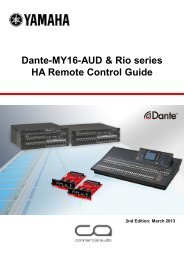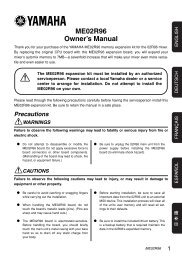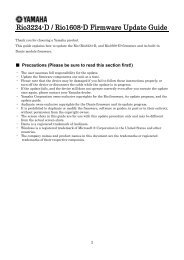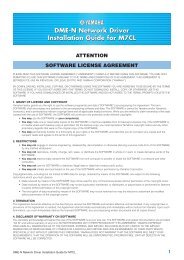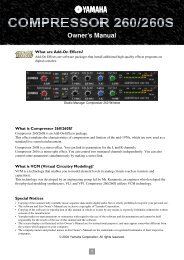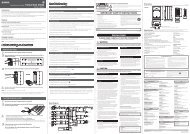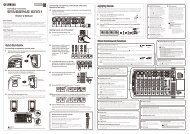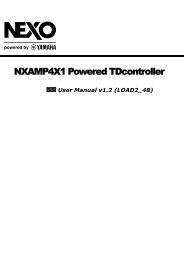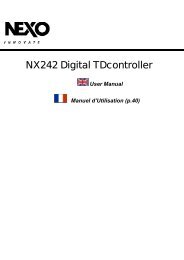Create successful ePaper yourself
Turn your PDF publications into a flip-book with our unique Google optimized e-Paper software.
P.14 USING THE CONFIGURABLE DIRECTIVITY DEVICEWhen & where to use Configurable Directivity flangesThe diagram below can be considered as a plan view of the audience area shown in Figure 1. Instead oflooking through the sidewall, we are looking through the ceiling. While the <strong>GEO</strong> cluster will deliver even SPLfrom the front to the rear of this audience area, there are “holes” near the front in the centre and at the outsideedges. We cannot fill the outside coverage gaps without enlarging the centre gap, and vice versa.- Figure 1 :Plan view of coverage using two <strong>GEO</strong> curved vertical arrayswithout Configurable Directivity flanges- Figure 2 : Plan view of coverage using two <strong>GEO</strong> curved verticalarrays. Both Configurable Directivity flanges have been installed inthe bottom two cabinets of the clusters.However, if we install Configurable Directivity Devices in the bottom two cabinets of the cluster, coverage willlook more like the pattern in Figure 2.In curved vertical arrays, the Configurable Directivity Device can be used:• On the bottom two rows of curved vertical arrays, to fill in coverage gaps in the front rows.• On all rows of curved vertical arrays, in cases where 240° of horizontal coverage is preferred to160°.In horizontal arrays of <strong>GEO</strong> S830s, the Configurable Directivity Device can be removed to narrow the verticalcoverage of the array from 120° to 80°.- Sectional view of a 100’ deep space, showing coverage alternatives using <strong>GEO</strong> S830 arrays aimed straight down, with (right) andwithout (left) CDD flanges.



